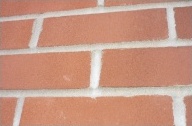Pointing / Repointing

Our repointing services
We carry out all kind of repointing work in and around Sheffield. Repointing can be a very labourious and messy job so our builders take pride in tidiness as well as taking extra care in leaving all existing masonry units undamaged when it comes to raking out perished mortar.
We also carry out all forms of brickwork restoration caused as a result of damaged mortar be it replacing a single damage masonry units to rebuilding part of a damaged wall. We also carry out re-pointing work on chimney stacks to improve water penetration resistance and repairing damage mortar caused by creeping / crawler plants such as ivy, thus preserving the longevity of your building.
If you would like a free, no obligation quote from one of our experienced builder relating to repointing then then feel free to contact us.
Repointing explained
Read on if you want to learn a little bit more about repointing.
Pointing and repointing explained
Investigating the surroundings
Removing the old mortar
The mortar
Style of repointing
Saftey - ladders
The repointing test
Introduction to repointing
Natural decay and corrosion caused by weathering will eventually weaken the mortar in the joints between the masonry units. Once the mortar has been significantly weakened the wall will be at risk if moisture is able to penetrate deeply. This risk is increased during winter months when temperatures regularly dip below freezing. The process to replacing this damaged mortar is called repointing.
Pointing and repointing explained
People often say one of the following phrases:
Can you point my chimney?
Do you know a chimney pointer?
Can you repoint my chimney?
Do you know a chimney repointer?
The different between these in the building trade are as followed:
Pointing (point / pointer) is when the builder is applying the finished pointing style to the mortar when the wall is first being built. Repointing (repoint / repointer) is when the builder is applying new mortar to an already built wall for the second and subsequence time.
The two definitions are often interchanged and it has become an accepted norm for both definition to mean replacing damaged mortar outside the building trade. For clarity, the remaining information on this web page refer to pointing and repointing in the correct context.
Investigating the surroundings
Before commencing any repointing work an inspection of the surrounding should be made to eliminate any possibility that other factors such as leaking guttering and pipes, inadequate drainage, differential settlement to the building or a nearby tree haven't contributed to the mortar demise. Failure to rectify any problems found during this investigation process prior to any repointing is often false economy.
Removing the old mortar
A plugging chisel is commonly used to rake out the damaged mortar between the masonry units. Under certain circumstances where the mortar is stubborn in patches and it is safe to do so without damaging the masonry units, an abrasive wheel is used. The depth of the channel to be raked out is dependant on the size of the masonry units and the existing gap between the masonry units. It must be deep enough as to allow the new mortar to maximize the area to bond with.
The mortar
Mortar is a mixture of sand with an added binder such as cement or lime. The correct amount of water is then applied in order to turn it into a paste. The replaced mortar must have greater vapor permeability than the historic mortar otherwise serious damage to the building may occur. The new mortar must also be softer than the masonry units to prevent potential crushing of the masonry units during heat waves. It is easier and cheaper to replace damaged mortar than it is to replace damage masonry units.
Style of repointing
You adopt different methods of pointing when using different types of masonry e.g.
The main techniques for stone work are:

Square box pointing

Square section pointing

Weatherstruck pointing

Jointed by bucket handle
whereas approximately 99% of modern brickwork however usually requires jointing.
The style you repoint the building in should be done in the exact same style you found it in.
Saftey - ladders
Should you decide to carry out your own mortar raking out using manual tools then under no circumstances should you do so on a ladder. The excessive force which may be needed for patches of subborn mortar can easily knock you off the ladder when it suddenly break free.
On average 70 people in UK die each year from falling whilst working from height. Hiring scaffolding for this kind of work is vital to your wellbeing.
The repointing test
On close inspection of a building, if your mortar can be ground out without any effort using just a common DIY nail (Not an abrasive wheel) the mortar has perished and is ready for repointing.
As long as your building is not listed (Protected) then you can carry out your own nail test and if you feel it could need doing or want a second opinion then by all means contact us and we will advise you on your best course of action.











